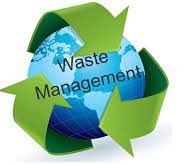Swachhta Saarthi Fellowship- Things to Know!
The Office of Principal Scientific Adviser of the Government of India has launched the “Swachhta Saarthi Fellowship” under the “Waste to Wealth” Mission on March 3, 2021.
About the Swachhta Saarthi Fellowship
The Swachhta Saarthi Fellowship initiative was launched with the objective of recognizing the students, self-help groups, community workers, sanitary workers and municipal workers who are engaged in tackling enormous challenge of waste management in a scientific and sustainable manner. Under the fellowship programme, the government will be providing awards under three categories as stated below:
- Category-A– This category will be open to School students of standards 9th to 12th who are engaged in the waste management community work.
- Category-B– This category is open to UG, PG and Research Students engaged in the waste management community work.
- Category-C: This category of the fellowship is open to the Citizens who are working in the community and through Self Help Groups, municipal workers or sanitary workers who are working beyond the specifications of their job requirements.
Waste to Wealth Mission
The “waste to wealth mission” was launched with the objective of identifying, developing and deploying technologies in order to treat the waste to recycle materials, extract worth and generate energy. This mission is one among the nine-national mission of the “Science, Technology and Innovation Advisory Council (PM-STIAC)” of the Prime Minister. It will also assist and augment the Smart Cities project and Swachh Bharat Mission in a bid to create circular economic models which are financially viable for waste management. This will in turn help in streamlining the waste handling across the country.
E-waste to Wealth Technology
The Indian Institute of Technology, Delhi has developed a zero-emission technology that will manage and recycle the e-waste into wealth. The technology uses the e-waste as the Urban Mine for recovering the metal and producing energy. Under the methodology, e-waste is shredded and pyrolyzed into the liquid and gaseous fuels which leaving behind a solid fraction which is rich in metal.
Month: Current Affairs - March, 2021


